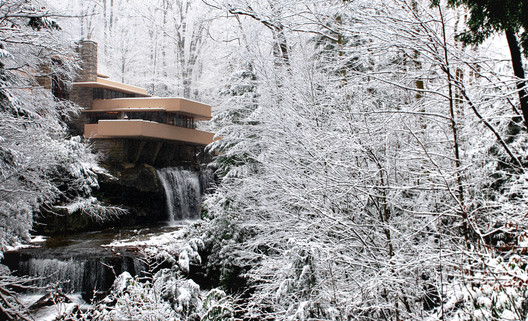
This month marks the 150th anniversary of the birth of acclaimed American architect, visionary, and social critic Frank Lloyd Wright -considered by many to be one of the greatest architects of his time.
As a pioneer of the term 'organic architecture', one of his most iconic representative works is Fallingwater, set upon a waterfall in rural Pennsylvania. From its unveiling, the scheme has evoked enduring reflection on the relationship between man, architecture, and most prominently in Frank Lloyd Wright's mind - nature.

The scheme was completed in 1937, commissioned by merchant Edgar J. Kaufmann and his wife as a weekend home. Foremost in Wright's mind was the intention of integrating the project into the landscape, establishing the scheme as a natural element of the environment.
Volumes that levitate on the water, foundations formed from local rocks, and natural materials like wood and brick are only some of the resources used by the architect to achieve a greater harmony between the building and the forest that surrounds it.

The profound changes of the environment during the year play a heavy role in one's experience of Fallingwater, perhaps evoking Wright's vision of a scheme which both influences, and is influenced by the natural world.

Today, Fallingwater is considered a national monument of the United States and operates as a public museum. For the architectural community, however, the experience of seeing or entering Fallingwater for the first time far outweighs any exhibit it contains.





